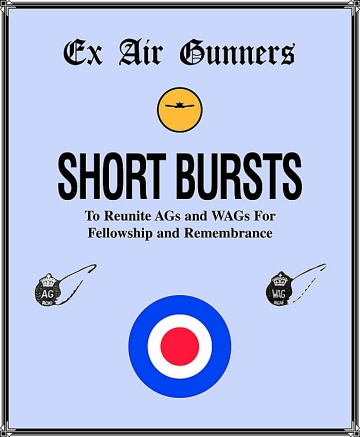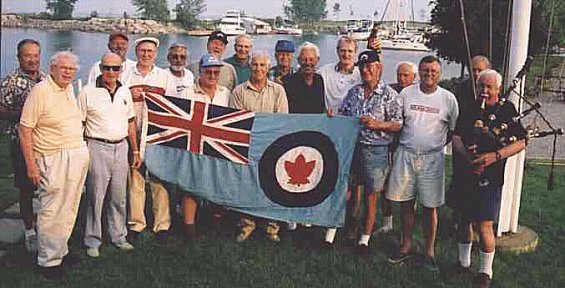BLACKBURN SHARK III
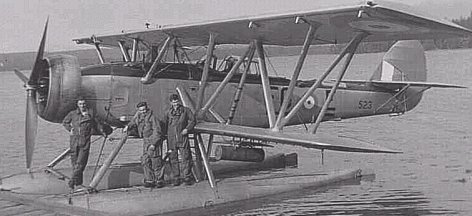
From L to R – WAG John Moyles, Navigator ‘Hank’ Hankinson,
Pilot Jerry McKenna
Picture taken by Tommy Cousins WAG – Summer of 1942.
BLACKBURN SHARK III
Upper wing span – 46 ft.
Length – 38 ft. 5 in.
Height – 14 ft. 3 in.
800 or 840 hp. Pegasus engine.
Military load – 1595 lbs
(usually 2 – 500 lb. Depth charges – 1 .303 fixed
Browning,
1 Gas Operated Vickers .303 free machine gun.)
Speed at Sea Level – 148 mph.
Service Ceiling – 15,800 ft.
Range – 731 miles.
|
The Blackburn Shark is usually remembered as the last
of the line of Blackburn torpedo-spotter-reconnaissance biplanes that served
on aircraft carriers of the Royal Navy between the two world wars.
Less well known is the story of Sharks operated by the R.C.A.F. Although
they were originally intended to be used as a torpedo strike force against
any hostile naval units menacing the Canadian coast, they never fulfilled
this role. Nevertheless both Canadian and British built Shark seaplanes
of the R.C.A.F. spent the first four years of the war, winter and summer,
on patrol and anti-submarine duties among the mountains, islands, and fogs
of Canada’s Pacific coast.
In December 1941 #7 BR Squadron was established at
Seal Cove in Prince Rupert, British Columbia. Blackburn Sharks and Squadron
aircrew began arriving and started patrolling. At first there was a total
of 9 pilots, 12 Wireless Air Gunners, and three Navigators. Pilots right
off Harvards and Ansons developing skills flying pontoon aircraft dealing
with glassy water, tides, currents, obstacles in the bay, mountains, and
fog.
To check out a green pilot the instructor stood on
the wing and shouted instructions in the art of taxiing, getting the ship
onto the step for take-off, all the while the WAG sitting in the open cockpit
behind the pilot was trying to protect his wireless equipment from the
salt spray. When the instructor thought that the pilot “had the hang of
it” he hailed a dinghy and went back to the mess for a stiff one, leaving
the pilot and wag to take off and get to know the temperamental lady.
Spare parts were scarce or non-existent. There was
no synchronization gear for the .303 fixed Browning machine gun firing
through the three bladed wooden prop. A red tag reading, “use in emergency
only” was hung from the gun. If the engine fire extinguisher was discharged,
there were no replacements – another red tag! One day a ship arrived with
spare parts. The whole Squadron went down to help unload this welcome cargo
but, when the crates arrived at the hangar they were for Canso flying boats
which, at that time, the Squadron did not have.
Most of the patrols were monotonous and boring, however,
there was great excitement on June 2nd. 1942 when all serviceable Sharks
(12) were scrambled and instructed to patrol West as far as fuel would
allow. The crews did not know that at that moment Admiral Katuta
of the Japanese Imperial Navy in command of a force of 2 carriers, the
Ryujo and The Junyo, 2 heavy cruisers, 3 destroyers, backed up by
a secondary force of 4 cruisers 9 destroyers, a screen of submarines, and
3 transports carrying 2500 invasion troops, ordered his planes from the
Junyo to attack Dutch Harbor in the Aleutians. It was a good thing the
7 B.R. Sharks didn’t have the range! On October 27, 1942 a submarine
was sighted and attacked off Rose Point on the Northern Tip of the Queen
Charlotte Islands. However, as the war in the Pacific moved South, patrols
became routine and moral deteriorated. The term “bushed” became common.
The WAG stood on the front of the pontoon, fed
starter cartridges into the engine and when it started, he released the
buoy rope and slid down the pontoon under the wing. As the pilot revved
the motor, pulled back on the stick to ploughed water, the WAG climbed
up the side of the a/c and entered the rear cockpit, usually head first
and soaking wet.
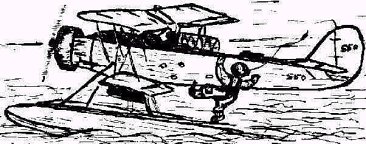
Gerald Trew, Ex-AG – Port
Hope Ont.
“Despite all my travelling, there was something else
I have always wanted to do – I wanted to make my own “War Pilgrimage.”
I really wanted to see more of the towns of England and the air bases which
were our home away from home. Also I wished to visit a number of air museums
and, especially, to visit the graves of my friends and to pay my final
respects.
Previous to my departure I had written the War Graves
Commission in Ottawa giving them details of the ones I knew had been killed.
They responded promptly, giving instructions on how to reach the cemeteries,
and the row and lot numbers of the graves.
On a Saturday morning in May 1993, I entered Brookwood
Military Cemetery near Woking, South West of London. It was a beautiful
morning with the sun shining through the trees, and of course the grounds
were like a picture post card. As I stood before the Stone of Remembrance,
I raised my eyes and saw the beautiful White Cross of Sacrifice located
at the far end of the cemetery. Ahead of me was a wide walkway, and the
papers I had in my hand stated that to my left were the graves of 925 Canadian
soldiers, and to the right the final resting place of 875 members of the
RCAF.
I soon reached Row H and started over to the grave.
My tears were coming and I knew in a few moments I would, for the first
time in more than 49 years, be standing in the presence of a friend of
so long ago. As I stood there in front of the grave I cried my eyes out
and I’m not ashamed to admit it. My mind was flooded with the thoughts
of the many blessings that I have enjoyed since the end of hostilities
yet, deep in my heart, I knew that my friend had just as much right to
live as I did. I also knew that, if it had not been for an illness which
delayed my posting overseas, perhaps except for the Grace of God, my name
might have been on the next stone. The crew were all laid out in a row,
the pilot, navigator,, bomb-aimer, and gunners. The pilot was the “old
man” 21 years old, yet he was flying a large twin-engined Wellington bomber.
My friend’s name on the stone read “Sgt. Robert Pegg RCAF. Killed August
30th. 1944 age 19 years.”
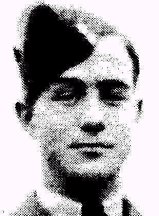
Robert Campbell Pegg
The story continued by Reporter Elaine Smith
SIMCOE REFORMER Thursday, Feb. 3rd. 2000. (In
part)
PORT ROWAN – Betty Brown thought she had locked away
memories of her brother, killed during the second world war, long ago.
In mid November, she found the lock undone. That’s
when Gerald Trew, a Port Hope resident and wartime pal of her brother,
placed an ad in the Simcoe Reformer looking for the family of Robert
Campbell Pegg, Soon Brown’s phone was ringing non stop, as were those of
her other four siblings. Friends, neighbors, and relatives were all calling
to make sure they had seen Trew’s advertisement.
“Bob and I were seventeen months apart,” said Brown,
“I was in the Air Force myself so I didn’t come home at the time. I got
about 12 calls from people who had known Bob. It was like sending sympathy
cards, a nice feeling.
Within no time she and her siblings were placing calls
to Trew in Port Hope.
“It was just tremendous” said Trew, whose idea of seeking
out Pegg’s family was cemented after a serious illness. “They had my tears
flowing when I got the call. They were just flabbergasted after all these
years to talk to someone who knew their brother”. Brown agrees, “He was
there and he had the memories”.
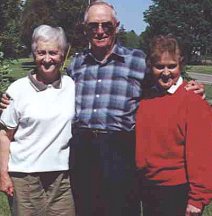
L to R Betty Brown Gerald Trew Nancy Whitworth
ENEMIES TURNED FRIENDS
A report by Gavin Engelbrecht
A Royal Air Force veteran has described meeting the
crew of a German submarine he had tried to shoot out of the water August
2, 1943. Bill Owens of Richmond, North Yorkshire, who joined crew members
of U-218 at their annual reunion, said, “They were all laughing and smiling
when I entered the function room. It was not a case of meeting the vanquished.
We met as war veterans and there was a feeling of real fellowship and camaraderie.”
U-boat gunner, Martin Wilns – one of six crew members
wounded by Bill in the submarine attack, still suffers from a leg wound,
but was one of the first to shake hands with him.
Bill, who served as a radio operator/front gunner in
an RAF Wellington bomber, recalls how he was confronted by
the startling sight of a U-boat slowly emerging from the vast expanse of
the Bay of Biscay – beneath his very nose. He said, “ we had heard of air
crews who had flown hundreds of monotonous hours on these patrols without
seeing anything at all. Looking for U-boats was like looking for a needle
in a haystack.” He added, “ once alerted the pilot decided to attack immediately.
As we went in low to drop our depth charges I could see my aim was accurate,
the bullets hitting the conning tower area of the U-boat.”
Six depth charges exploded on the starboard side of
the submarine but too far away to cause any damage. After three more machine
gun passes the U-boat crash dived ending the attack.
Bill thought no more about it until he was contacted
by a war historian, Norman Franks, who wanted help with researching the
book Conflict Over the Bay. He learned then that U-218 had had to abort
its patrol and return to port. Later a friend was swopping wartime stories
with the proprietor of a guest house in Germany who just happened to know
U-218’s radio operator, Herman Knoll.
Bill established contact, leading to his meeting with
the crew, including U-boat commander Captain Richard Becker and First Officer
Wilhem Foehner.
After the submarine limped back to base the crew members
were sent on two weeks leave – for which Bill received “grateful thanks”
when they met.
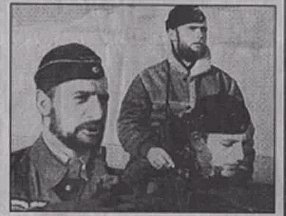
Captain Richard Becker (left)
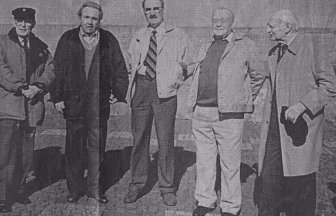
Bill Owens centre with crew of U-218
from left, Herman Noll, Mar Wilms, Lieutenant Walter
Boley and Captain Richard Becker.
WELDY
MOFFATT - WAG 427 Sqdrn.
REQUIEM FOR A REAR GUNNER
My brief sweet life is over, my eyes no longer see
No summer walks –
No Christmas trees –
No pretty girls for me –
I got the chop. I’ve had it. My nightly ops are done.
Yet in another hundred years I’ll still be twenty-one!
~Anon.
Your
Editor's Ramblings
A bit of Trivia – did you ever wonder what happened
to some of those reliable Lancasters?
I was reading a book by Charles Berlitz – THE BERMUDA
TRIANGLE, and came across the following:
“A British South American Tudor 1V four motor passenger
plane, a converted Lancaster bomber, called the Star Tiger, flying from
the Azores to Bermuda, disappeared on January 29, 1948. It carried a crew
of six and twenty-five passengers, including Sir Arthur Cunningham, British
World War 11 Air Marshal and former commander of the Second Tactical Air
Force RCAF. The Star Tiger was scheduled to land at Kindley field, Bermuda,
and at 10:30 p.m. shortly before ETA, the pilot radioed the control tower
a message including the worlds, “weather and performance excellent and
expect to arrive on schedule.” The plane’s position was reported 380 miles
North East of Bermuda.
There was no further message but the Star Tiger never
arrived. Thirty planes and ten ships combed the area for several days without
success.
By an extraordinary and rather disquieting coincidence
occurring within twelve days before the first anniversary of the disappearance
of the Star Tiger, her sister ship, the Star Ariel, carrying a crew of
seven and thirteen passengers, disappeared in a flight between Bermuda
and Jamaica on January 7, 1949. Her Captain sent the following routine
flight report back to Bermuda about forty-five minutes after takeoff.
“This is Captain McPhee aboard “Ariel” en route to
Kingston, Jamaica from Bermuda. We have reached cruising altitude. Fair
weather. Expect time of arrival Kingston as scheduled … I am changing frequency
to pick up Kingston.”
There was no further messages from Star Ariel,
then or ever. Seventy-two search planes, from a Naval Task Force in the
area, flying in close formation, covered 150,000 square miles of ocean.
They were unable to discover a single piece of evidence which could be
identified with the missing plane.”
Sven Jensen from Edmonton, Alberta dropped in for
a visit. Sven showed me a book he had put together setting out the Members
of the Ex-Air Gunner’s Association – Northern Alberta Branch. A Member
is acknowledged on each page setting out particulars of residence, date
of enlistment and service career, squadrons, if POW, etc. as well as pre-war
and post-war occupations, and also a picture of the Member. Sven is to
be congratulated on what he refers to as “a labor of love”.
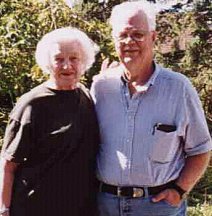
Elizabeth and Sven Jensen
In the September Issue we mentioned that the Northern
Alberta Group had presented the Greenwood family with a gift of appreciation.
Here it is:
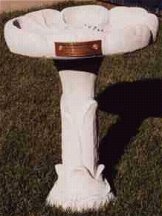
The Greenwood Family
In Appreciation
Ex-Air Gunners
Charlie Yule, accompanied by Earl Hiscox, from Winnipeg
presented a complete set of SHORT BURSTS, to the CATP Museum in Brandon,
Manitoba, and we spent some time with our volunteer Web master Bill Hillman.
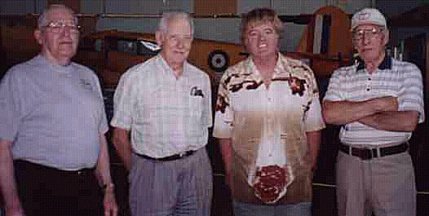
Charlie Yule, Earl Hiscox, Bill Hillman, John Moyles
Gleaned from Gaggle and Stream Bomber Command
Newsletter
A man is flying a hot air balloon and realizes he is
lost.
He reduces height and spots a man down below. He lowers
the balloon further and shouts “Excuse me, can you tell me where I am?”
The man below says, “yes you are in a hot air balloon,
hovering 30 feet above this field.”
“You must be an L.A.C.,” says the balloonist.
“I am,” replied the man. “How did you know.”
“Well”, says the balloonist, “Everything you have told
me is technically correct, but its not useful to me.”
The man below says, “You must be a Pilot Officer.”
“I am,” replied the balloonist, “But how did you know?”
“Well”, says the man, “You don’t know where you are,
or where you are going, but you expect me to be able to help. You are in
the same position you were before we met, but now its my fault!”
The Editor of Gaggle and Stream needs our help with
some Air Force jargon. As we all found out, the “ERK” was the backbone
of the Air Force. Why an “ERK”? What was the derivation of the word? Where
did the word come from? If you have a clue, please let your Editor know
and I will pass it on.
Correspondence
Received
Subject: combat reports
From: Richard
Koval <rkoval@voyageur.ca>
To: tweedhouse@sk.sympatico.ca
Hello John. I have a large web site on the 6 group
at www.rcaf.com/6group . I have just received combat reports from Jan 43
to April 44, concerning 6 group aircraft. In due time they will all be
on my site. If any ex 6 group gunners would like copies of these, I will
have them copied and mailed.
Best regards Richard.
Subject: crewmembers
Date: Sun, 01 Jul 2001 15:52:05 -0700
From: Jim
Murphy <jt.murphy@home.com>
To: tweedhouse@sk.sympatico.ca
I was an A/G on 115 squadron Witchford in 1945. We
had two Canadian members our B/A was named Roman Strelchuk and our WOP/AG
was named Cliff Mayne, a long shot I know but I wonder if anyone can maybe
recall either name .
thanks for your time. Jim
Murphy
From: Chalet
<chalet@manitoulin.net>
To: tweedhouse@sk.sympatico.ca
Hello, my father, Malcolm "Mac" McLean passed away
in 1964. He was a tail gunner with 429 sqn, 6th bomber group stationed
at Leeming. I was wondering if any of your members knew him and had any
pics they wanted to share. I have only one picture of him in uniform, the
rest were lost years ago.
Thank you,
Regards, Jim
McLean
BOOK
REVIEW
BEHIND ENEMY LINES "A Memoir of James
Moffat" by Mary Thomas
Epic Press - Belleville, Ont, Canada. 224 pages,
soft cover. Cdn. $19.95 plus $2.50 per book postage;
U.S. $16.95 plus $2.50 postage. To order:
Jim Moffat
M. Thomas
810 - 49 th Ave.,
36 Meadowvale Ave.,
Lachine, PQ. H8T T2T
Belleville, ON. K8N 2L4
RCAF F/O Jim Moffat an Air Gunner with 427 (Lion) Squadron
parachutes into enemy territory after his Halifax bomber collides with
an RAF Lancaster bomber during a Nurenburg raid over Germany in 1944. He
is the only survivor. Jim spends six months in Germany-occupied Belgium
and France. Often alone, always in danger. The Belgian Resistance and the
French Maquis help him.
I have read many books written by men who served in
the RCAF and many of them follow the same pattern; pre-service, Manning
Derpot, Training and on to Ops and then post war activities. BEHIND ENEMY
LINES is different. The writer leads the reader right into the action and
as the story unfolds the reader finds that it is not just a story of Jim
Moffat, it is also a story of the people who rescued him, helped
him, looked after him when he was sick. People he faught beside. These
were the villagers of Southern Belgium and North Eastern France, trying
to live under the occupation of a brutal Nazi Germany, and risking their
lives helping allied airmen and carrying out operations against the enemy.
In 1988 Jim returned to Belgium and was reunited with
those coragous people who helped him 44 years before. The book contains
may pictures of his Belgium friends, some taken during the war.
You will find that Mary Thomas has a convincing way
with words. Mary has taken the memories of Jim Moffat and, in true jounalistic
fashion, told a story depicting compassion, suspense, vivid description,
portaying Jim's fight for survival and the courage of the Belgium
and French Resistance.
I recommend BEHIND ENEMY LINES, it is a gripping book,
hard to put down. A valuable addition to your WWII book shelf.
~John Moyles
OBITUARIES
SARSON, A.L.J. Burlington, ON: 'Tony' passed
away peacefully at his home Sept. 13/01 - age 78. His Service Number
was R200836 and he received his Air Gunner training at #1 B&G School
at Jarvis, ON. He served with 424 Squadron in 6 Group and was a member
of the Hamilton Air Force Club and RCL Br. #36 in Dundas as well as the
Halton Naval Veterans Assoc. and Bomber Command Association as well as
the Hamilton Representative for the Allied Airforce Reunion Committee.
BRANCH REPORTS
There were no Branch Reports this month, however,
the Southern Ontario Chapter sent the following group picture of the gang
at Buffer's Park Yacht Club June 15th 2001.
